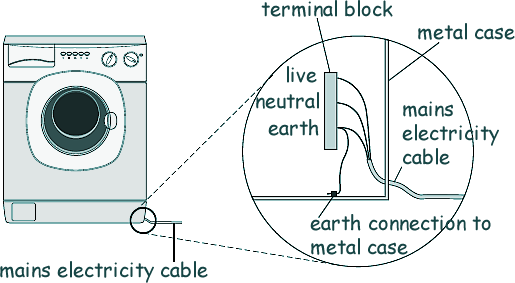GCSE Standard Questions: Electricity in the Home Q11. A washing machine is connected to the mains electricity supply using a cable and three-pin plug. (a) Here is a three-pin plug.
[1 mark]
[1 mark]
(b) The three-pin plug contains a fuse. The fuse is connected to one of the wires inside the cable.
[1 mark]
[1 mark]
[4 marks] (c) The diagram below shows how the mains electricity cable is connected to the washing machine. The earth wire is connected to the metal case of the washing machine.
If a fault makes the metal case live, the earth wire and fuse inside the plug prevent the mains cable from overheating and causing a fire. Explain how. [3 marks] (d) New research has shown that many people underestimate the hazards of using mains electricity. It is important that people do understand the hazards of using mains electricity. Suggest why. [1 mark] (Total 11 marks) |
Follow me...
|







